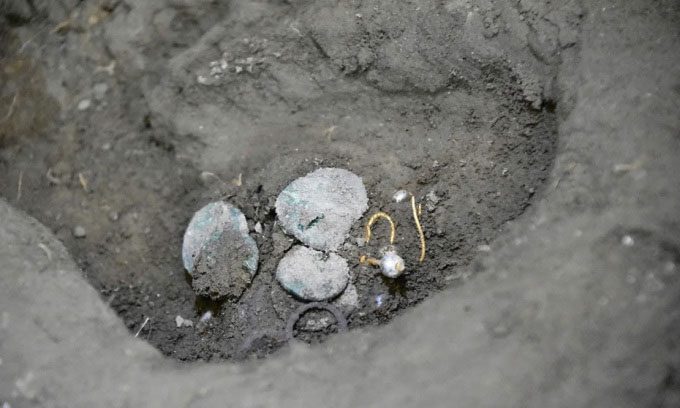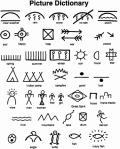The remains of a middle-aged woman lying on a bed, surrounded by coins and jewelry, were discovered in a room in Pompeii.
Scientists uncovered two skeletons during the excavation of Regio IX in the ancient city of Pompeii, revealing the final moments of panic experienced by victims during the catastrophic eruption of Mount Vesuvius in 79 AD, reported IFL Science on August 12. This new research was led by Gabriel Zuchtriegel, director of the Pompeii archaeological park, along with colleagues, and published in the online journal Excavations of Pompeii.

Two skeletons found in Area 33. (Photo: Pompeii Archaeological Park).
The woman’s remains, estimated to be between 35 and 45 years old, were found on a bed in a fetal position, while the young man—believed to be no older than 20—was found dead under the rubble of a collapsed wall. The room where these two victims were discovered is referred to as Area 33.
As the room was not filled with volcanic pumice, the research team speculated that the two victims may have sought refuge from the rain of lava falling upon Pompeii. However, they became trapped when the adjacent room filled with pumice.

The woman died with coins and jewelry. (Photo: Pompeii Archaeological Park)
A thick layer of ash several centimeters deep on the floor indicates that both victims likely perished due to a surge of volcanic debris—a fast-moving flow of volcanic material and hot gases. The researchers believe this deadly flow caused the wall to collapse, killing the young man. Meanwhile, the middle-aged woman may have survived for a short time longer, lying on the bed and waiting for death.
Next to the woman’s remains, archaeologists discovered a set of iron keys, possibly linked to a nearby chest. Additionally, she was surrounded by numerous coins made of gold, silver, and bronze, as well as jewelry. Among the jewelry were a pair of gold and pearl earrings of the “crotalia” style (named for the sound made when the pearls clink together), as well as an amulet pendant believed to offer protection during childbirth. Based on this discovery, the research team suggests that the woman intended to carry her treasures with her to escape but ultimately could not leave Area 33.
| The ancient city of Pompeii was designated a UNESCO World Heritage Site in 1997. Much of the city remains covered in layers of ash from the eruption of Mount Vesuvius. Experts continue to excavate various sites to gather more information about the lives of the city’s residents before the disaster. |





















































